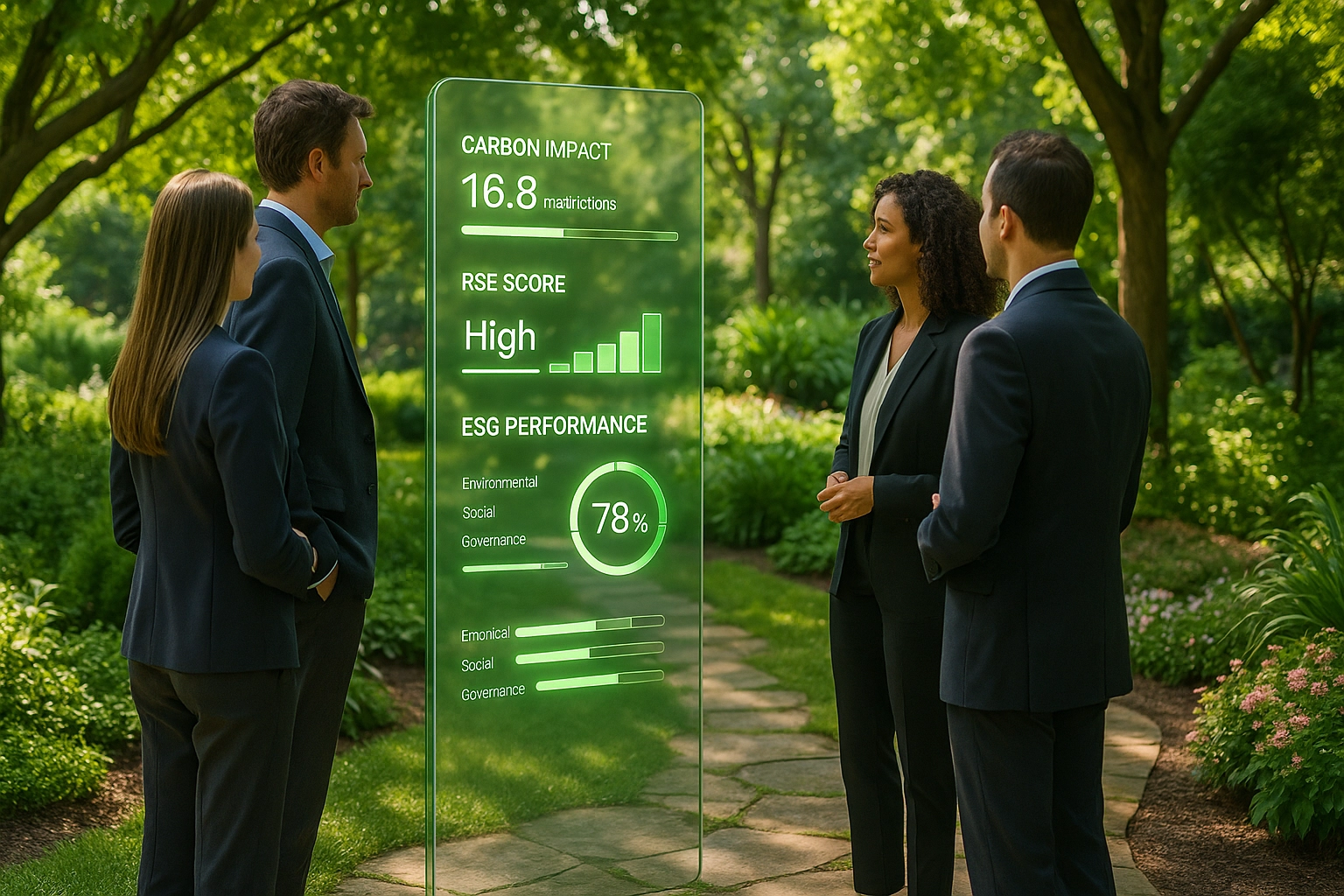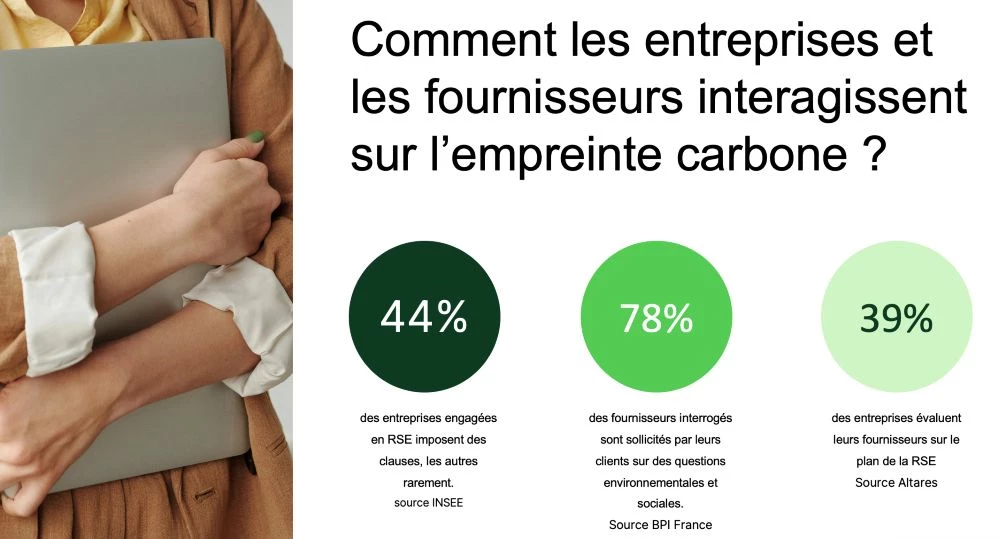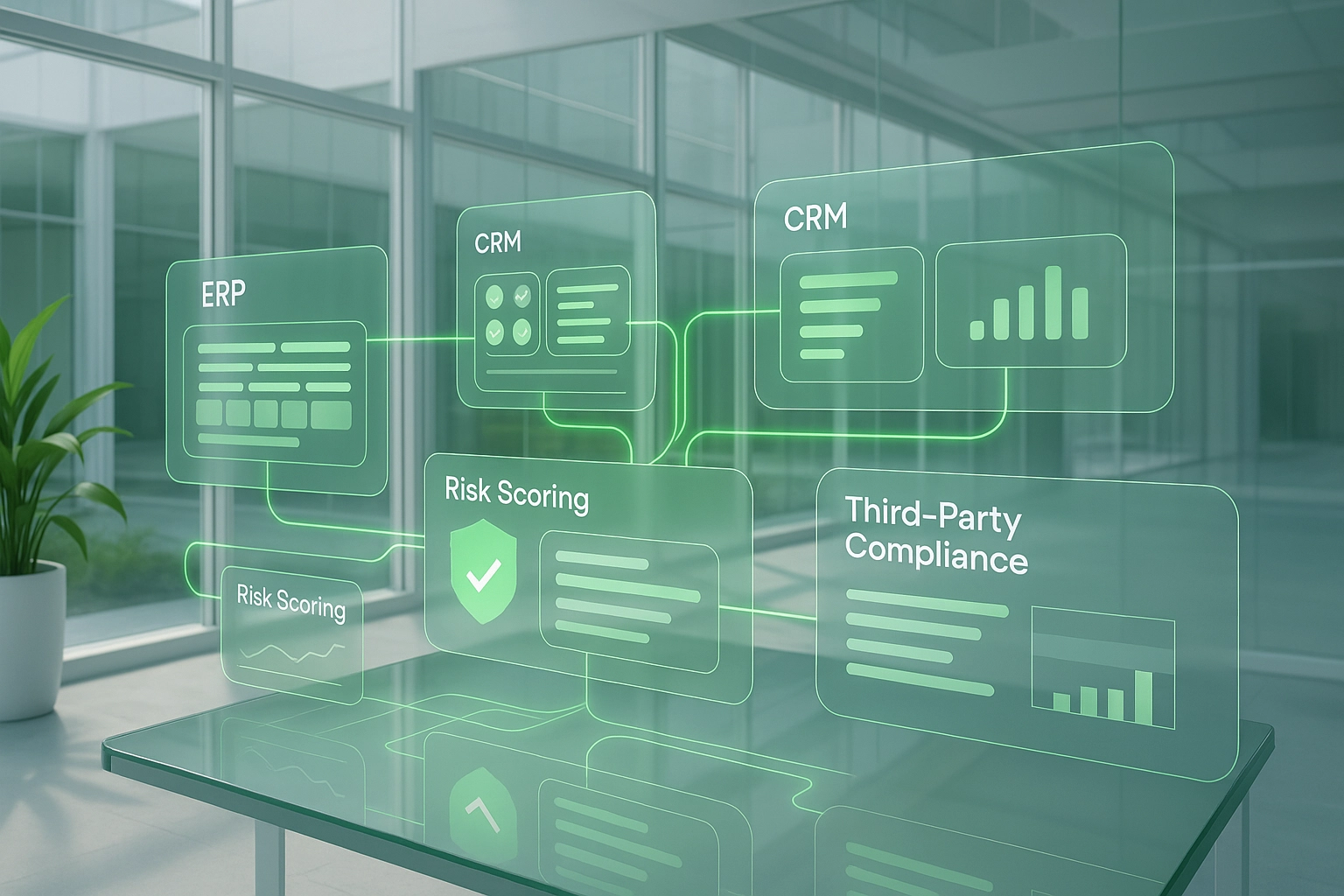Assess the ESG maturity of third-party partners to optimize your carbon footprint

Assessing the ESG maturity of your third-party partners directly impacts your sourcing strategy and the environmental footprint of your operations. Identifying the level of environmental commitment and compliance within your partner ecosystem is now a critical insight for any organization aiming to improve sustainable performance.
However, collecting the necessary documents and data can be complex and time-consuming, often requiring input from multiple sources and significant effort from your teams. Today’s third-party governance solutions automate these tasks by orchestrating the entire process, identifying relevant indicators, and calculating maturity scores. The main advantage: automated activation of corrective actions based on the insights gathered.
How Companies and Their Partners Interact on Carbon Footprint
Recent data reveals significant disparities in how organizations approach ESG (Environmental, Social, and Governance) practices. According to a study by Insee, 44% of companies engaged in ESG require their partners to comply with a set of specifications that include ESG clauses. In contrast, only 12% of companies not involved in ESG impose such requirements on their third parties.
A study conducted by Bpifrance shows that 78% of suppliers surveyed are questioned by their clients on environmental and social issues. This demand varies by company size: 50% of very small businesses (VSBs), 82% of small and medium-sized enterprises (SMEs), and 91% of mid-sized companies (MSCs) report such client expectations.
According to a study by Altares, only 39% of companies evaluate their partners based on ESG performance. The main barrier to developing ESG strategies remains the lack of standardized data and leadership on the topic. It is crucial to note that 70% of a company’s ESG impact comes from the activities of its external partners, highlighting the importance of giving them focused attention.

Automating ESG Evaluation with Third-Party Governance Tools
Modern TPGRC (Third Party Governance & Risk Compliance) platforms are radically transforming the traditional approach to maturity assessment. These tools efficiently orchestrate the entire process by connecting directly to global ESG and sustainability databases — including Ecovadis, Dun & Bradstreet ESG, and SBTi — to deliver an initial automated assessment.
Go Further
To dive deeper into this technological shift, discover how to move from TPRM to TPGRC and effectively manage third-party risks in a constantly evolving regulatory landscape.
Centralizing and Automating ESG Data
Advanced technologies go beyond basic data collection by automating the verification of forms and documents provided by your partners. This approach gives you a clear and comprehensive view of their ESG commitment level:
- Centralized information: Automatic integration into your non-financial reporting
- Multi-criteria analysis: Based on both internal and external sources, including industry-leading ESG ratings and scores
- Proactive identification: Detection of environmental improvement opportunities via real-time dashboards and tracking indicators
- Simplified collection: Easy retrieval of ESG data from a single centralized platform
- Optimized management: Quick identification of non-compliant partners and implementation of targeted action plans
- Ongoing monitoring: Continuous tracking with automated alerts and complete visibility
Integrating SBTi Data for Enhanced Climate Audits
Leveraging Science Based Targets initiative (SBTi) data marks a major advancement in auditing the climate maturity of third parties. This globally recognized standard for climate commitment tracking enables you to:
- Identify companies committed to the SBTi and track their validation status
- Analyze emission reduction targets — especially those related to Scope 3
- Verify compliance with science-based pathways through independent external audits
- Automatically integrate this information into workflows to enhance evaluation accuracy
This approach provides greater transparency and precision in assessing your partners’ environmental commitments, thereby reinforcing your own ESG strategy. For a deeper understanding of these issues, explore our guide to Scope 3 data collection methodology within the CSRD framework.
Sector-Specific Approaches to ESG Analysis
Public Sector and Local Authorities
In the public sector, assessing the ESG maturity of partners is part of a broader commitment to social responsibility. Local authorities now include strict environmental criteria in their tenders, requiring ongoing evaluation of service providers.
Construction and Infrastructure
The construction industry faces specific challenges around decarbonization and environmental compliance. Assessing the ESG maturity of subcontractors is essential to meet climate goals and comply with new regulations. Discover how to manage subcontractors’ carbon footprint in the construction sector and strengthen your decarbonization strategy.
Industry and Manufacturing
Industrial companies must closely monitor the environmental compliance of critical suppliers, especially in relation to ICPE (Installations Classified for Environmental Protection) and REACH regulations. Automating these checks enables continuous oversight of environmental risks.
Retail and Distribution
Retail players are increasingly embedding ESG analysis into their supply chain strategies, especially for international marketplaces and complex supply chains. To explore this topic further, read our guide on evaluating and managing ESG partners.
Optimize Your Strategy with an Integrated Platform
Adopting an automated and integrated third-party governance solution enables greater efficiency and compliance while driving continuous improvement across your partner ecosystem. This collaborative approach simplifies ESG data sharing and reduces the administrative burden on your partners.
Automated systems allow for centralized ESG data, enabling optimized sustainable performance. To explore the core features of these evaluation tools, read our analysis on ESG data centralization for sustainable performance.
Towards Responsible and High-Performance Third-Party Governance
Assessing the ESG maturity of third-party partners is a key strategic lever to optimize your carbon footprint and strengthen your competitive positioning. By adopting an automated and collaborative approach, you turn regulatory constraints into operational advantages, while actively contributing to your industry’s ecological transition goals.
This strategic shift requires specialized expertise and tailored tools to maximize the impact of your ESG approach, all while accounting for the specific characteristics of your partner ecosystem.
Ready to Transform Your ESG Strategy?
Book a demo now and discover how Aprovall360 can help you manage your commitments proactively!
These articles might interest you
-
 04 April 2025Understanding Key Financial Indicators for Evaluating Your Third-Party PartnersSolutionsIn an economic environment where over 60% of European companies have faced operational incidents linked to their third-party partners, as highlighted by the European Central Bank in its Annual Report on Supervisory Activities, understanding and mastering key financial indicators has become essential for evaluating the stability of your business partners. These third-party assessment tools help […]
04 April 2025Understanding Key Financial Indicators for Evaluating Your Third-Party PartnersSolutionsIn an economic environment where over 60% of European companies have faced operational incidents linked to their third-party partners, as highlighted by the European Central Bank in its Annual Report on Supervisory Activities, understanding and mastering key financial indicators has become essential for evaluating the stability of your business partners. These third-party assessment tools help […]Read more
-
 08 April 2025How to Assess the Financial Health of Your Third-Party PartnersSolutionsAssessing the financial health of third-party partners has become a crucial element in ensuring the operational resilience of your supply chain. According to the 2023 report from the Financial Stability Board, economic interdependencies have significantly increased in recent years—bringing flexibility and innovation but also creating potential risks for financial stability if not properly managed. Understanding […]
08 April 2025How to Assess the Financial Health of Your Third-Party PartnersSolutionsAssessing the financial health of third-party partners has become a crucial element in ensuring the operational resilience of your supply chain. According to the 2023 report from the Financial Stability Board, economic interdependencies have significantly increased in recent years—bringing flexibility and innovation but also creating potential risks for financial stability if not properly managed. Understanding […]Read more
-
 30 January 2025Integrating Information Systems into TPRM PlatformsSolutionsIntegrating information systems into TPRM platforms has become a major strategic issue for organizations. A recent study reveals that 41% of companies experienced a serious third-party breach in the past 12 months, underlining the urgency to adopt robust third-party governance solutions. In this context, Third-Party Risk Management (TPRM)platforms are evolving to offer a more collaborative and […]
30 January 2025Integrating Information Systems into TPRM PlatformsSolutionsIntegrating information systems into TPRM platforms has become a major strategic issue for organizations. A recent study reveals that 41% of companies experienced a serious third-party breach in the past 12 months, underlining the urgency to adopt robust third-party governance solutions. In this context, Third-Party Risk Management (TPRM)platforms are evolving to offer a more collaborative and […]Read more
-
 05 March 2025Maximizing the Impact of Dynamic Risk Scoring: Monitoring and Personalization for Effective Third-Party Risk ManagementSolutionsIn our previous article, we explored the fundamentals of dynamic risk scoring and its essential role in evolving third-party governance practices. This innovative approach, leveraging real-time data and sophisticated analytical models, is profoundly transforming the way organizations assess their third-party partners. As European regulatory requirements tighten with DORA, NIS 2, and the convergence of CSRD/Duty of Vigilance, organizations must […]
05 March 2025Maximizing the Impact of Dynamic Risk Scoring: Monitoring and Personalization for Effective Third-Party Risk ManagementSolutionsIn our previous article, we explored the fundamentals of dynamic risk scoring and its essential role in evolving third-party governance practices. This innovative approach, leveraging real-time data and sophisticated analytical models, is profoundly transforming the way organizations assess their third-party partners. As European regulatory requirements tighten with DORA, NIS 2, and the convergence of CSRD/Duty of Vigilance, organizations must […]Read more

